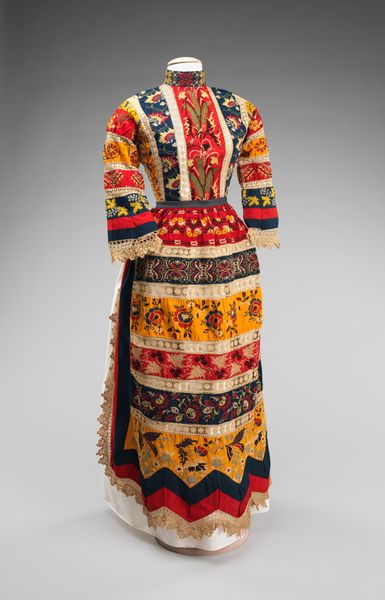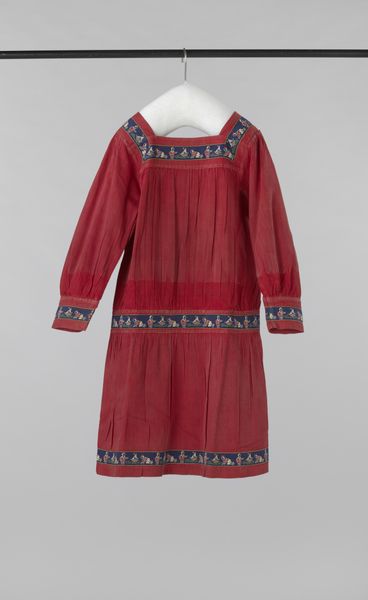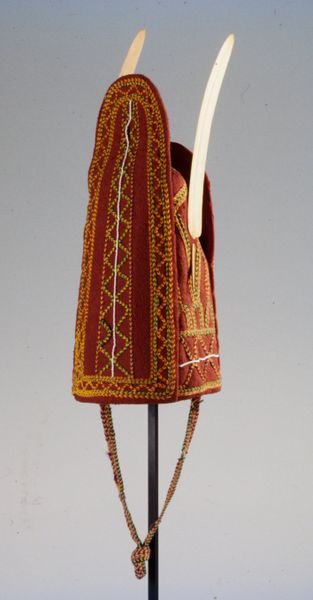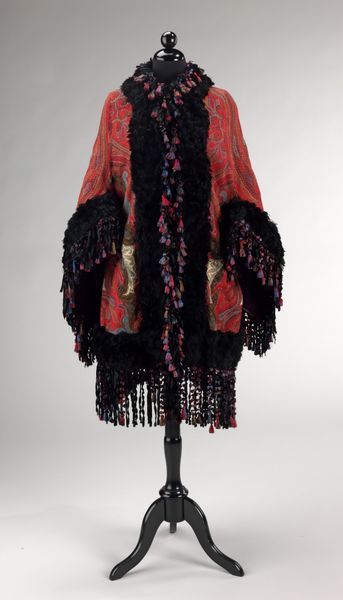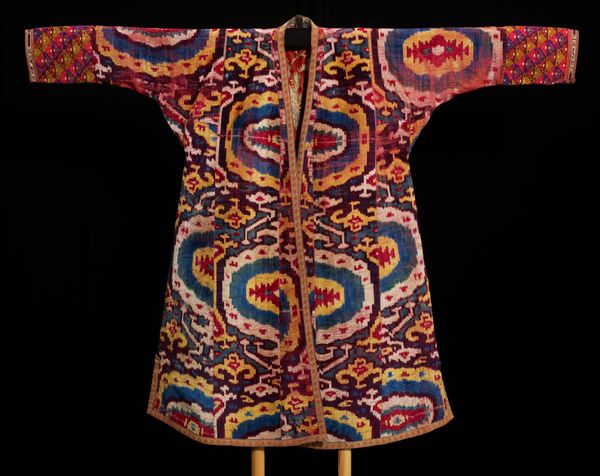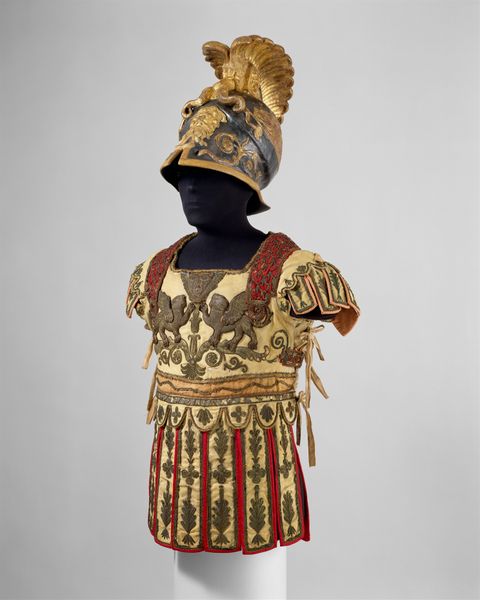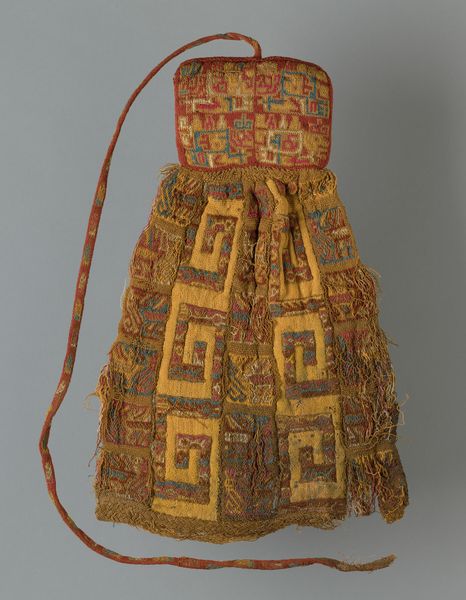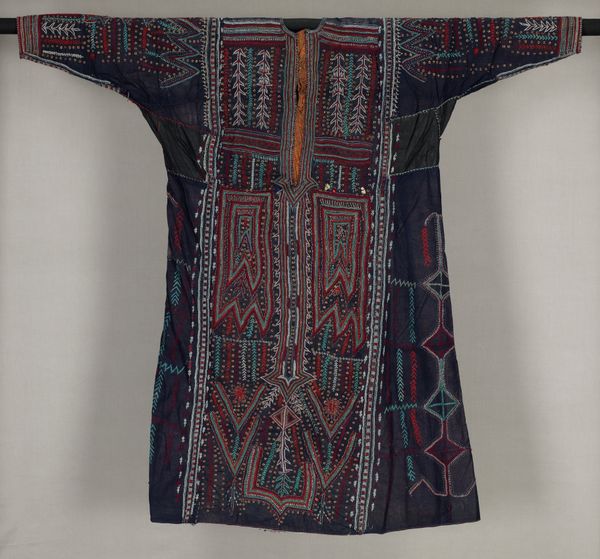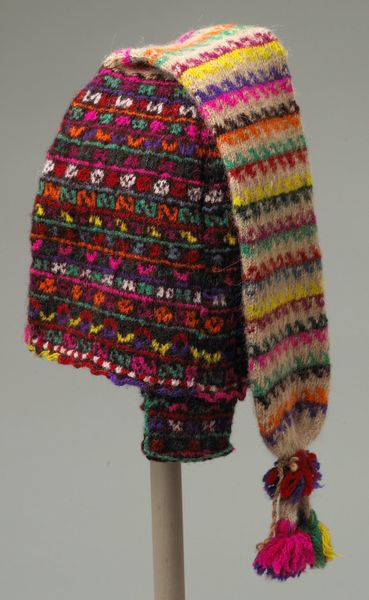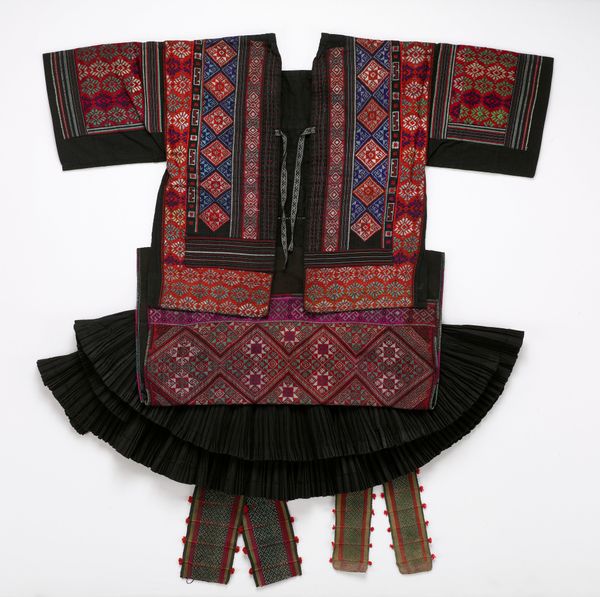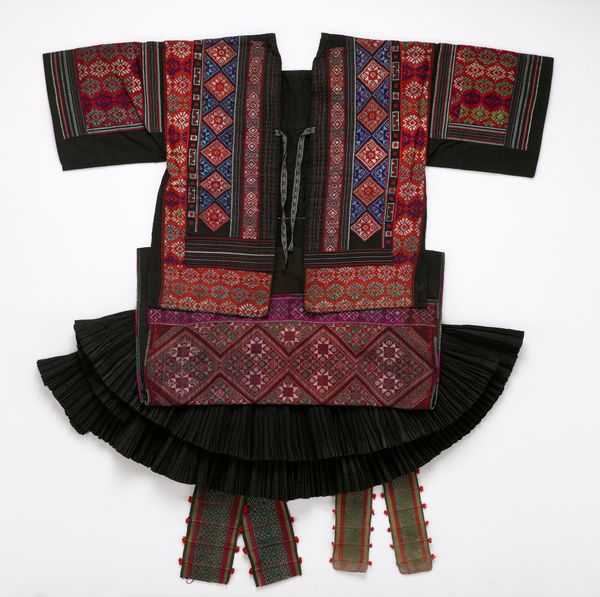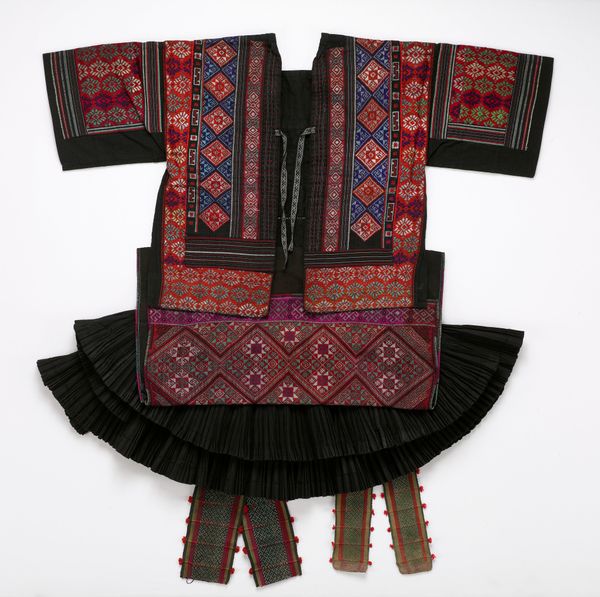
fibre-art, textile, cotton
#
fashion design
#
underwear fashion design
#
fibre-art
#
fashion mockup
#
textile
#
collage layering style
#
fashion and textile design
#
fashion based
#
wearable design
#
clothing theme
#
clothing photo
#
cotton
#
indigenous-americas
#
clothing design
Dimensions: 26 11/16 x 28 1/2 in. (67.79 x 72.39 cm)
Copyright: Public Domain
Curator: Let’s turn our attention to this fascinating piece—a Seminole “Shirt” dating roughly from 1930 to 1940. It’s currently part of the collection at the Minneapolis Institute of Art, and it exemplifies the dynamic textile traditions of the Seminole people. Editor: Oh, my goodness, look at that vibrant color play! It’s like a syncopated rhythm rendered in fabric. Immediately, I feel an incredible sense of joy and almost defiant energy radiating from it. It is hard to reconcile this with the difficult Seminole history. Curator: Indeed. The garment's construction employs patchwork, specifically strip-piecing—small pieces of cotton precisely sewn together to create horizontal bands. The strategic repetition and variation of patterns, from squares to triangles, generates visual complexity, drawing the eye across the surface. The colors, too, play a pivotal role, functioning almost like visual cues in a language yet to be fully deciphered. Editor: Right? And those motifs! They feel incredibly personal, telling stories that I can only imagine. Is it possible to look at the formal arrangement of these elements, the strips and the triangles you describe, as expressions of cultural resilience or a kind of…visual sovereignty? It feels like the person wearing this is really saying something. Curator: That is precisely the point. This work does not exist in isolation. It operates within a system of cultural codes, articulating identity, community, and resistance. The horizontal lines might represent continuity while the sharp angles, in semiotic terms, symbolize both protection and agency. What seems like a simple shirt actually performs complex cultural work. Editor: Yes, I completely agree! The act of wearing it transforms the body into a walking declaration. What at first glance appears almost naive—bright, almost childlike, it morphs into a powerful visual manifesto. So the whole "function" is more profound than simple utility, wouldn't you say? Curator: Undoubtedly. The shirt, materially constructed from cotton and labor, surpasses the boundaries of mere clothing. It serves as an archive of knowledge, passed down through generations, coded into patterns and color palettes. A sartorial system of communication, a testament to Seminole ingenuity and artistry. Editor: So when we approach this object, what we're really looking at is more than just fabric, stitches, seams and all of that. It’s an intricate intersection of tradition, creativity, and resilience worn literally on one’s sleeve, I think. A powerful visual symphony… Curator: An articulate, material rhetoric, embedded with ancestral memory, and present assertion of identity. Well observed. Editor: Thanks—it’s been wonderfully illuminating, and the experience definitely transformed my initial perceptions. Now, where to next?
Comments
minneapolisinstituteofart about 2 years ago
⋮
The Seminole are divided into two groups; one group that currently lives in Oklahoma as a result of President Andrew Jackson's relocating the tribe, and another group that stayed in the Southeast region. The group that currently lives in the Southeast region created this shirt. In 1910 this style of shirt, known as the Big Shirt, replaced a style that was known as the Long Shirt. This type of shirt would have been worn only by men or boys, and later worn by men of high stature. The Seminole adapted their clothing to new influences and their environment. They traded for cotton that replaced their use of animal hides. Cotton was cooler and much easier to work. With limited supplies of cotton, the Seminole developed a patchwork technique that became their garment style. This type of shirt would be worn over a white shirt, and the style had a relatively short lifespan. In the 1940s, the Big Shirt was transformed into a jacket, and was worn as an indicator of Seminole identity.
Join the conversation
Join millions of artists and users on Artera today and experience the ultimate creative platform.
